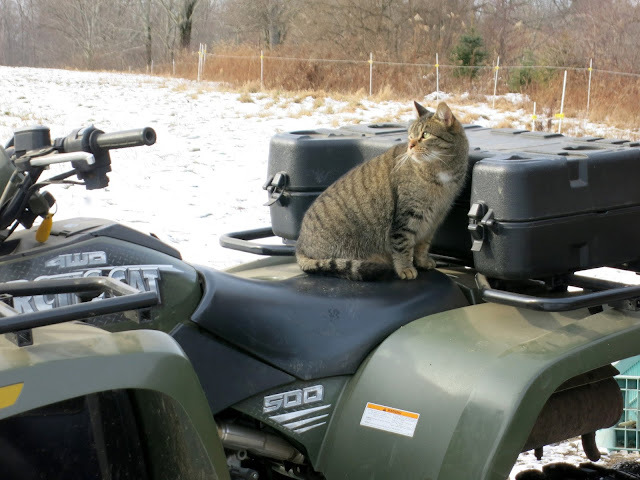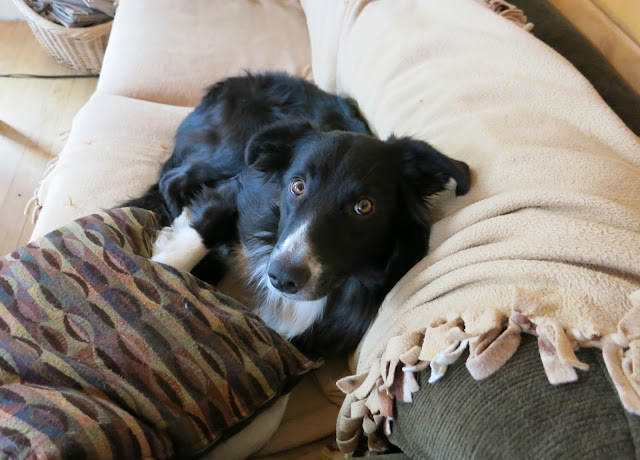Before I go on with part two of Hawkeye's tale, I need to back up to summer of 2014. We had been watching for the release of a new type of plastic/rubber horseshoe that we had been hoping might work out for
Lakota. We had a pair on order for him, unfortunately, he had a major, incurable crisis just days before those new shoes arrived in the mail and we had to let him go.
Because of Lakota, we had been dabbling with the
EasyShoes (which are basically like sneakers for horses) and wanted to try them out more even though he was gone. They are very flexible in all directions and provide most of the benefits of going barefoot, while still offering protection.
The shoes are somewhat similar to the
Easyboots that RB had been using on Hawkeye for several years. The boots work well most of the time, but do sometimes fall off, don't always fit perfectly and can be a bit of a hassle. We liked the idea of the Easyshoes because they seemed like they might offer the benefits of going barefoot with the protection and convenience of a shoe. We wanted to see if they would work.
This is one of the shoes just slipped on the hoof to check for fit...
Easycare offers a "fit-kit" for a nominal price. Basically, you measure the hoof to find the closet size and then they will send you samples of that size plus one smaller and one larger size. I definitely recommend doing this if you are going to try these shoes.
The Easyshoes come in several versions and we chose the
Easyshoe Performance. We liked this shoe because it provides support and stimulation to the whole hoof, including the frog, rather than just the outer walls. This shoe comes in either a glue-on only version or one that can be glued or nailed. Initially, we wanted to use these as a glue-on shoe.
We tried them out on both Tessa and Hawkeye with so-so results. There are several types of glue used for these shoes, all of which are two-part urethane/cyano-acrilate type things that are very expensive and totally unforgiving. In my normal obsessive way, I did tons of research and learned way more than I ever really wanted to about glue. The two most common glues used with these shoes are
Adhere, a urethane glue and
EasyShoe Bond, the cyano-acrilate glue. The latter is considered to be the better choice for wet environments, so that is what we tried.
The trouble with these glues is that they have a very steep learning curve and the tiniest misstep ruins the glue along with the shoe you are trying to glue on. That wouldn't be a big issue except that, at $65 per tube of glue plus $45 per pair for shoes, that learning curve can add up to a LOT of money in a very short time.
The gluing process requires extensive prep and extreme attention to detail (
Easycare has several excellent videos on their webpage detailing how to put these on and I strongly recommend them for anyone interested in the shoes). I wasn't put off by the process, because attention to detail is one of my strengths.
The hoof has to be totally clean, prepped for glue and DRY. That last was a huge hurdle for us given that our pasture conditions are wet in the best of times and it rained incessantly that summer. We used a moisture meter and small butane torch to get the hoof wall dry, but moisture still ended up being our biggest problem. A wet environment causes the hoof to swell and then contract when it dries. Since the pasture is wet and the barn is dry, we have a constant wet/dry cycle that is a challenge to any adhesive.
Temperature is also a huge factor in dealing with the glue. It does not like to be either too hot or too cold, nor dose it like excess humidity. It was about 85 degrees with 95% humidity when we did this and the glue did not like that at all (neither did we). We kept the glue in a cooler until we were ready to use it, but that first tube of glue we used had gotten very hot in transit before it got to us. It had the consistency of cottage cheese when it came out of the tube and did not get us off to a good start.
This was my second ever attempt at glue-on shoes, after Hawkeye pulled one off after the first week. The other shoe stayed on 4-5 weeks if I remember right. It's not pretty, but they did work.
In addition to the shoe, I added "Blue Stuff", as we call it. It is Dental Impression Material. It is another two-part material that sets up when mixed. Unlike the glue, this stuff comes in tubs and is rather fun to play with. It has two components that are just like silly putty, you mix them together and squish the stuff into whatever shape or crevice you want. It will set up into a flexible, cushiony silicone pad that gives the foot more support and stimulation.
Despite
the rain, mud and humidity, we did have some success with the
glue-ons. After some trial and error, replacing the first tube of
over-heated glue and much persistence, I was getting pretty good at
gluing on shoes. However, with Lakota gone, we didn't need them so
much, the cost and prep time were rather onerous and the boots we had
been using for years still worked. We ultimately gave up on the glue-on
shoes.
I think there is a real place for glue-ons and I am glad to have had some experience with them. I am not
convinced, though, that they are a good option in the kind of wet
environment we have. That doesn't mean that they aren't a good product
and I would try them again if the circumstances warranted it. I do
think that the price of glue needs to come way down for this to be truly
viable for the average horse owner.
***
I have to add here that I do have some
personal pet peeves about the glue, or the marketing of it I should say,
that really got under my skin. It is extra costly and difficult to
experiment with the glue because each type of glue requires its very
own dispensing gun, which won't work for any other type of
glue. At $75-100 per gun, that can add up fast. The glue we chose can be used without a gun (which is what we did), but it definitely adds to the difficulty in an already difficult process.
The guns are basically fancy caulk guns, but they are purposely
designed to lock you into buying only the glue that fits
that gun.
This kind of marketing scheme just bugs me and turns me off the
products. If any one of these companies ever develops a gun that works
with all the different glue cartridges now on the market, I would immediately become a
loyal and devoted costumer. Better yet (and easier) would be to make the glue cartridges work with a regular caulk gun, which I already have or can buy at any hardware store.
Some manufacturers do offer some
small, single-use tubes that you can use without a gun. However, "single-use" is optimistic. They are such a huge
pain in the a** to use that they end up being more of a waste than a
help. Fighting with those suckers could easily drive a saint into a fit
of rage.
If you are a professional farrier who is
going to be charging $200-500 for a set of these shoes, then spending
$500 to gain proficiency and another $500 to stock up on glue and
dispensing guns is a good investment and that extra $100 bucks is no big
deal. For me and RB, the cost of glue-on was a hard pill to swallow.
Despite my annoyance with the manufacturers of these products, I am also very glad that they are there. There are so many more (and better) options for helping horses with foot problems now than there used to be thanks to companies like
EasyCare and
Vettec. Glue-on shoes are only a small, recent part of what they offer and those are only just beginning to come into their own. The glue-ons have come a long way from where they were a few years ago and I expect that they will continue to improve and adapt in the coming years.
***
Since the glue on shoes weren't quite right for us, that left the other option in EasyShoes.
To be continued....

























































